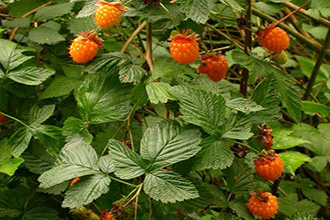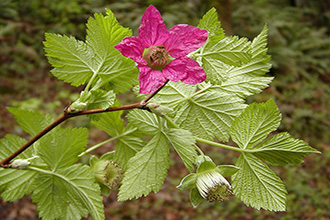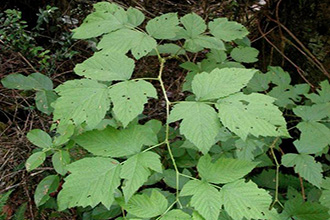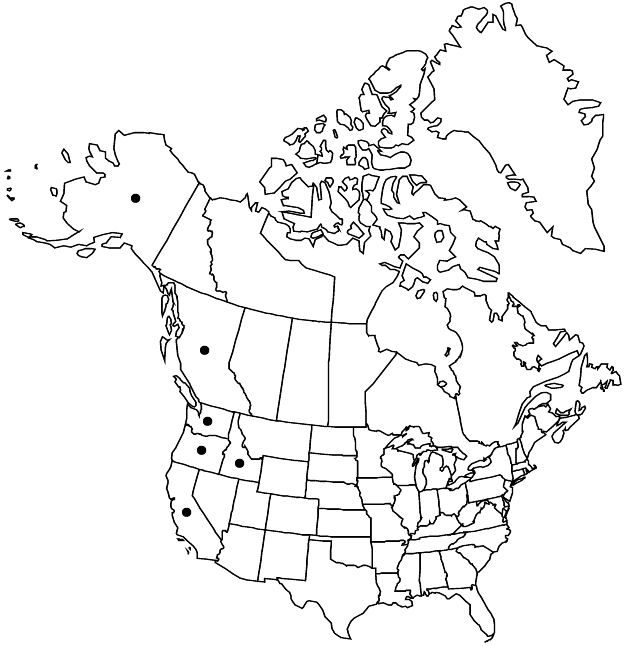Taxonomy: Kingdom - Plantae (plants). Subkingdom - Tracheobionta (vascular plants). Superdivision - Spermatophyta (seed plants). Division - Magnoliophyta (flowering plants). Class - Magnoliopsida (dicotyledons). Subclass - Rosidae. Order - Rosales. Family - Rosaceae (rose). Genus - Rubus L. Species - Rubus spectabilis Pursh
Ecology: Salmonberry is a pioneer or early seral species noted for its ability to spread aggressively on disturbed sites. Seedlings generally appear in abundance after fire, timber harvest, or other types of disturbance. Rhizomes enable salmonberry to spread vigorously and form dense patches where it was prevalent in predisturbance communities. Salmonberry communities commonly develop early in succession in Sitka spruce and Pacific silver fir zones of Oregon and Washington, in Sitka spruce-western hemlock forests of Alaska, and in many Douglas-fir forests of the Pacific Northwest. Salmonberry has been described as shade tolerant and relatively intolerant of shade. In some locations this shrub persists in climax forest communities; elsewhere it is gradually eliminated as the canopy closes. Although most common in early seral stages, salmonberry has also been reported in early immature, second growth, mature, and old growth forests in British Columbia. It can reportedly persist almost indefinitely in the understory of alder or mixed hardwood-conifer stands. Salmonberry is more likely to be eliminated in coniferous forests where light levels are lower.
In the WFDP: Salmonberry is rare in the WFDP, existing in only one small patch (5-6 square meters) with two stems above 1 cm at DBH that are tagged.



